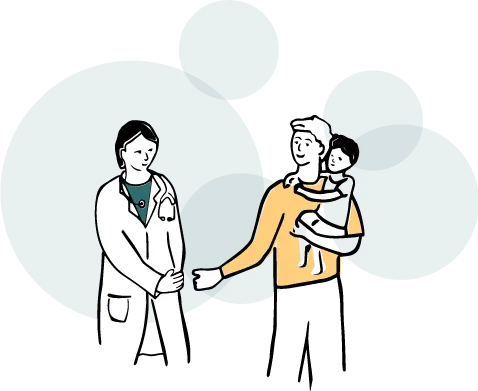

Neuropathic Hunter syndrome (MPS II) phenotype in a young patient (<3 years)
Mateo was born healthy during a cold winter. As a young baby, he often suffered from ear and respiratory infections, but these were attributed to the time of year. When the infections continued, Mateo was referred to an ENT doctor who believed he must be picking these up from other babies at daycare.1 He also had bouts of diarrhea,1 but this was thought to be a side effect from the antibiotic medicine he was taking for his current infection.
Mateo developed an abdominal hernia when he was aged 1; his physician advised that it would probably resolve on its own so it was left untreated.2 However, his parents were concerned that it didn’t seem to be going away and noticed that his stomach was getting bigger.2 When Mateo was 2 years old, the daycare nurses informed his parents that they were concerned because he was misbehaving and potentially showing signs of speech delay.1,3,4



Frequent ear and respiratory tract infections1

Abdominal
hernia2

Chronic
diarrhea2

Distended
abdomen2

Behavioral
problems2

Coarse facial
features1

Speech
delay3
Mateo’s parents took Mateo back to the physician for a follow-up and voiced their new concerns. After seeing his abdominal hernia again, his physician recommended surgical repair.5 The pediatric surgeon reviewed Mateo’s medical history and began to suspect Hunter syndrome. Upon seeing Mateo, the pediatric surgeon immediately recognized his coarse facial features with his prominent brow and flat, broad nose, as she had previously performed surgery on another MPS patient.1 The pediatric surgeon referred Mateo to a geneticist and genetic testing confirmed the diagnosis.1,3
A common pitfall when examining patients with undiagnosed MPS II is a failure to connect the many seemingly unrelated symptoms to a single underlying cause.3 Patients may be examined by several specialists for their individual symptoms before an accurate diagnosis is made.6 Increased awareness of MPS II among the healthcare community can lead to earlier referral and diagnosis.3
*This is a hypothetical patient profile intended to represent a young patient with neuropathic Hunter syndrome. Individual signs and symptoms may vary.
1. Martin R et al. Pediatrics. 2008;121(2):e377-e386. 2. Wraith JE et al. Eur J Pediatr. 2008;167(3):267-277. 3. Burton BK, Giugliani R. Eur J Pediatr. 2012;171(4):631-639. 4. Muenzer J et al. Pediatrics. 2009;124(6):e1228-e1239. 5. Mendelsohn NJ et al. Genet Med. 2010;12(12):816-822. 6. Giugliani R et al. Genet Mol Biol. 2014;37(2):315-329.
Hunter syndrome is a
progressive genetic disease
If you suspect Hunter syndrome, refer your patient to a metabolic geneticist for an accurate diagnosis.